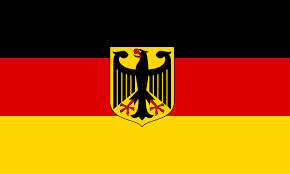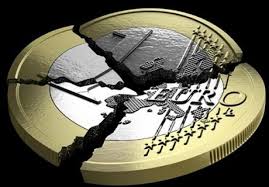The Eurozone is an economic and monetary union, which consists of 19 countries within the European Union, which in itself is a confederation of 28 nations primarily from Europe, forming an economic union. The countries of the Eurozone (euro area) use a common currency called the Euro and share a common independent monetary policy which is presided over by the European Central Bank. Below is an evaluation of Germany’s performance after the formation of the Eurozone.
From 2000 to 2008, Germany’s average annual GDP growth was 1.4%. From 1995 to 2008 GDP growth averaged 1.6% p.a. Although the per capita GDP has been growing steadily since 1991; it has almost been the same after Germany’s entry into the Euro zone. The GDP took a hit after the beginning of the debt crisis, even witnessing negative growth in 2009, but has bounced back promisingly. The German economy grew by 3% in 2011.Its real growth since 2007 has averaged 1.684% which is lower than only 4 Euro area countries: i.e. Poland, Sweden, Austria and Belgium, showing resilience to the crisis as compared to other euro area nations.
Exports and the Current Account:
German exports have undoubtedly benefited from the Euro as it is cheaper than what the Deutsche Mark would have been, as it represents the competitiveness of the entire Euro area. The European Commission estimated that the Euro was 10-12% undervalued for Germany in the 1st quarter of 2009.It’s share in world exports increased in 2000-2009 ,considering that the share of other advanced countries reduced. In the same period, the share of exports to its GDP rose by 14%.
The German current account balance improved after the Euro’s adoption, after declining into negative territory after the German reunification. Germany’s bilateral trade surplus with the PIIGS countries (Greece, Ireland, Portugal, Spain and Italy-the countries affected by the crisis) also improved. For e.g. Greece’s trade deficit with Germany widened from -1.5% of Greece’s GDP in 199 to -2.5% in 2008.
Unemployment: (as % of total labour force)
Germany’s unemployment rose steadily since the Euro’s introduction, barring the reduction in 2000. But since the global meltdown, it has been declining, reaching 7.07% in 2010 and sliding further to 6.3%, 6.5%, 5.8% and 5.6% in the consecutive quarters of 2011 respectively. Its unemployment rate is the third lowest among all Euro zone nations, just above the rates in Austria and Netherlands (countries which have been relatively unaffected by the debt crisis).
Government debt:
After an initial fall after 1999, Germany’s debt has also been rising since 2002 which is in sync with the trend in other euro area nations. As of January 2012 Germany’s government debt equals 81.2% of GDP lower than 89.2% in France and 88.8% in the UK and all the crisis countries of PIGGS (excluding Spain)
Click here for government certification in Accounting, Banking & Finance





6 Comments. Leave new
Well written!
Nice..!!
good job 😀
easy and understandable.
informative 🙂
great work